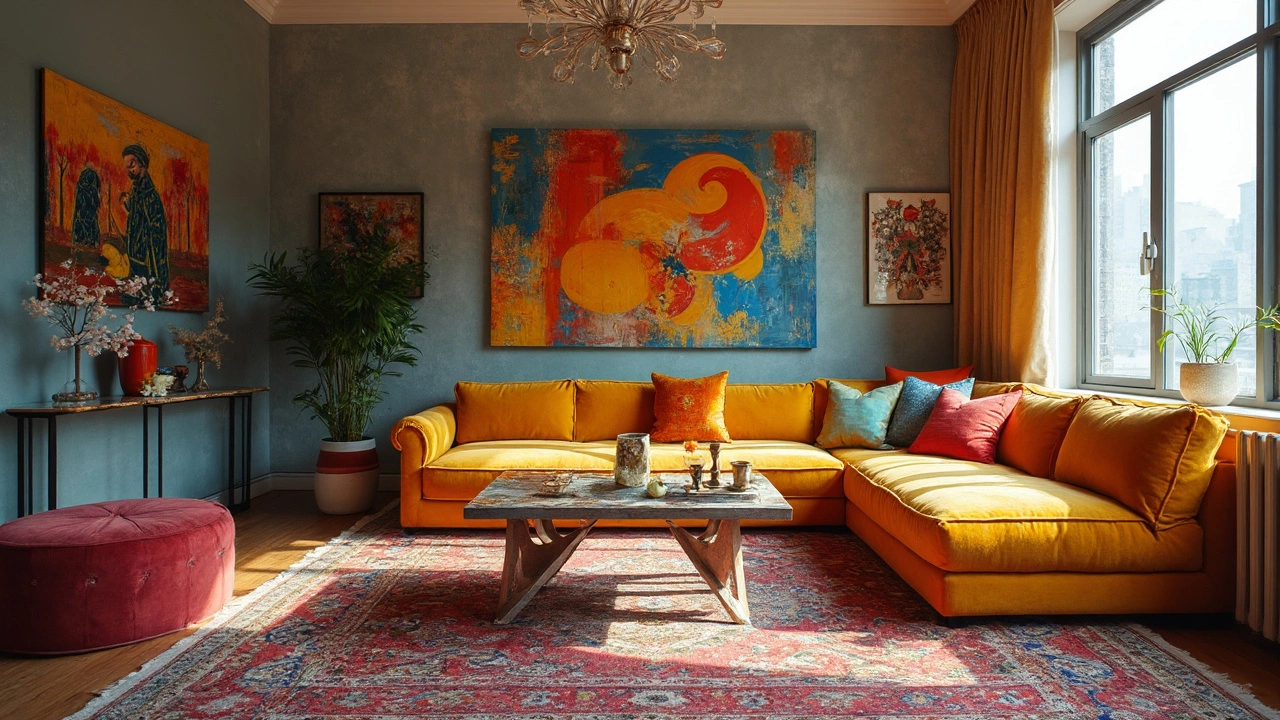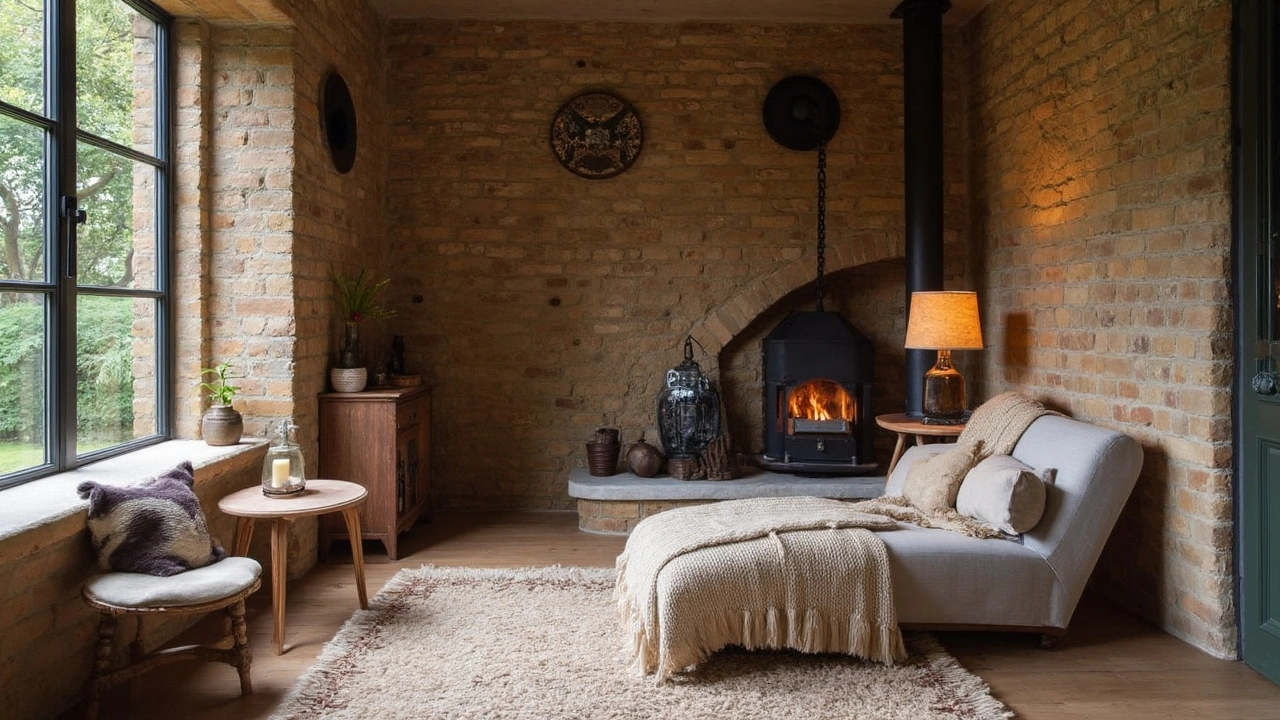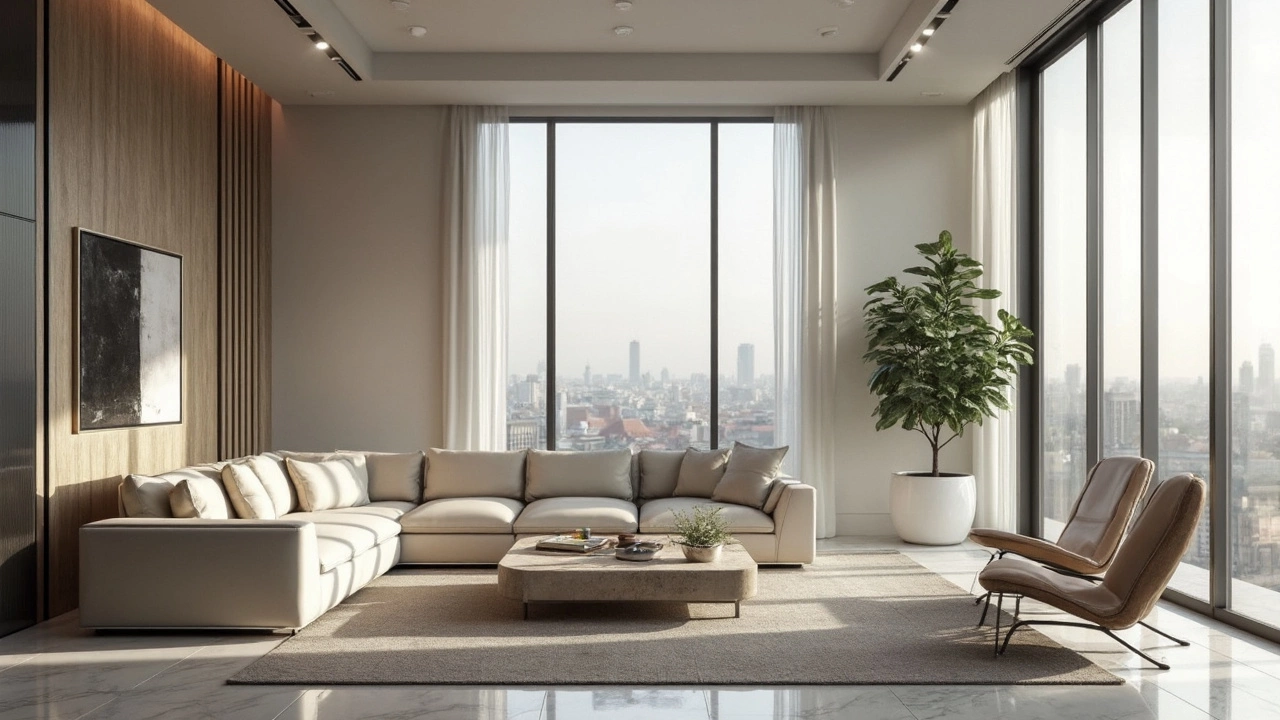Ever wondered how some people manage to have homes that look like they’ve jumped straight out of a magazine? The secret often lies in the work of a talented interior designer. Let's dive into the world of modern interiors, where creativity meets functionality.
First things first—what makes an interior designer stand out in the crowded field of home design? It's all about their unique approach and ability to blend aesthetics with the practical needs of the homeowner. Take Kelly Wearstler, for example. Known for her bold, eclectic style, she’s transformed hotels, restaurants, and residences into iconic spaces that are anything but ordinary.
But it's not just about flashy designs. Minimalists like John Pawson focus on simplicity and the play of light and space to create serene environments. His designs are a testament to the idea that sometimes, less truly is more.
Choosing a modern interior designer is not just about following the trends; it's about understanding your own lifestyle and how a designer can enhance it. Whether you’re yearning for a complete home makeover or just a room refresh, the right designer can make all the difference. So, what should you consider when picking one? Compatibility is key—not just in terms of design taste but also in communication and collaboration.
- The Pioneers of Modern Interior Design
- Unique Styles that Define Modern Spaces
- Innovative Approaches to Home Decor
- Bringing Your Vision to Life
- Finding the Right Designer for You
The Pioneers of Modern Interior Design
When we talk about the movers and shakers of the modern interiors world, a few names must absolutely be on the list. These visionaries have pushed boundaries, mixed materials, and created spaces that are both functional and breathtakingly beautiful.
Kelly Wearstler: Bold and Eclectic
Kelly Wearstler is a name that pops up frequently in modern design conversations. With an eye for the bold and the eclectic, she has a way of transforming spaces into adventurous escapades. Her style isn't for the faint-hearted but rather for those who love a mix of vintage and contemporary—and everything fun in between.
John Pawson: Master of Minimalism
For those who believe that less is more, John Pawson is a guru of minimalist design. He strips spaces down to their essence, using light and space as the primary design tools. Pawson’s work is so simplified yet calming that you wonder if you need to de-clutter your own life.
Philippe Starck: The Innovative Optimist
Philippe Starck is about as iconic as it gets in the world of modern design. Known for his playful and innovative approach, his designs range from luxurious hotels to humble kitchen gadgets. Starck believes in enhancing the happiness and quality of life through design, which, let's be honest, is a mission we can all get behind.
Charlotte Perriand: The Unsung Heroine
Charlotte Perriand might not be as widely recognized as her male counterparts, but her impact on modern interiors cannot be overstated. Working during the early to mid-20th century, Perriand was a pioneer in integrating functionality with aesthetically pleasing designs. Her approach laid down the foundations for many aspects of modern interior design today.
These pioneers not only set the standard but continue to inspire new generations of interior designers. Their legacies are reflected in everything from the choice of materials to the way we perceive space. So next time you rearrange your living room, think about how these innovators might rearrange the rules as well.
Unique Styles that Define Modern Spaces
Modern interior design is all about clean lines and a sense of simplicity, but that doesn't mean it's boring. In fact, the beauty of modern interiors lies in how designers use space, color, and texture to create stunning environments.
Minimalism and Functionality
One of the cornerstones of modern interior design is minimalism. This approach focuses on stripping away the unnecessary and focusing on functionality. It's not just about having fewer things; it's about having the right things. Designers like John Pawson have mastered this by creating spaces that emphasize light and space, making rooms feel larger and more inviting.
Mid-Century Modern Charm
This style has seen a huge resurgence in recent years. It brings in furniture and decor from the 1950s and 1960s, characterized by simple forms and organic curves. The use of materials like wood and metal gives mid-century modern its timeless appeal. In these spaces, home design often includes iconic furniture pieces, like Eames chairs, which add both style and function.
Bold Colors and Textures
While some might think modern design is all whites and grays, that's not always the case. Designers like Kelly Wearstler show that modern can be vibrant. By using bold colors and intriguing textures, you can add personality to any space. Think of it as a pop of color in your favorite black and white photo—unexpected and delightful.
Experimenting with textures is another way designers keep spaces interesting. Mixing stone, wood, and metals helps add layers that draw the eye and keep a room from feeling flat.
| Style | Characteristic |
|---|---|
| Minimalism | Functionality over decor |
| Mid-Century | Organic curves and classic materials |
| Bold Colors | Vibrant hues and rich textures |
All these styles show there's no one-size-fits-all for modern interiors. The key is finding the approach that fits your own lifestyle and taste. So whether you love the idea of a clutter-free minimalist space or a room bursting with color, modern design offers a range of options to explore.

Innovative Approaches to Home Decor
Interior design is more than just picking out pretty furniture. It’s about creating spaces that improve how we live, and that’s why modern designers are always coming up with new ways to approach home design. One of the most exciting trends right now is sustainable design.
Many top designers are embracing eco-friendly materials and practices. Take, for example, the use of reclaimed wood or recycled metal in furniture. Not only do these materials give a unique character to a room, but they're also better for the planet. What's better than having a stunning home and saving the Earth at the same time?
Another fresh approach is integrating technology into creative spaces. Smart homes are no longer the future—they're here. Designers are seamlessly incorporating gadgets that can control lighting, temperature, and even curtains with a simple voice command. It's all about making life easier without sacrificing style.
Smart Storage Solutions
Space is often at a premium, especially in urban settings, so designers are focusing on maximizing every inch. Multi-functional furniture like coffee tables with hidden storage or beds that fold up against the wall is very much in vogue. This trend is part of the broader 'less is more' movement, popularized by designers like Marie Kondo.
Embracing Unconventional Materials
Lastly, unconventional materials are making headlines in modern interiors. Have you ever thought about using cork as a wall covering or rubber floors in your kitchen? These materials are not only durable but also add a quirky touch to any space. Designers love experimenting with textures, giving rooms a unique feel while maintaining a sleek aesthetic.
These innovative ideas are not just trends—they're shaping how we live and interact with our environments. Whether you want a minor update or a full transformation, there’s a modern approach out there to suit your needs.
Bringing Your Vision to Life
So, you’ve decided to revamp your home with the help of a top-notch interior designer. But where to start? Transforming a space isn’t just about picking the right paint; it's about creating a place that feels like you. Here's how to make sure your vision becomes a reality.
Start with a Clear Vision
Before meeting with potential interior designers, take some time to think about your dream space. Do you lean more towards modern interiors or prefer something more eclectic? Gather images, swatches, and inspiration—it’s like assembling a mood board for your home. A clear concept not only helps the designer understand your style but also saves time in the initial design phase.
Find the Right Fit
Landing the perfect designer is akin to finding the right partner. Communication is key—ensure they listen to your ideas and concerns while providing their expertise. Book initial consultations with a few to see who aligns with your vibe. Don’t forget to ask to see their portfolio. It's about trust and mutual respect, not just aesthetics.
Collaborate and Communicate
Once you’ve chosen an interior designer, the magic begins. Be ready to communicate openly, sharing both what you love and what doesn't quite hit the mark. A good designer will value your input and tweak their designs accordingly. Remember, this is a partnership, and your voice is crucial.
Project Timeline and Budget
Okay, the nitty-gritty—time and money. Clearly set a budget, and stick to it. Discuss timelines so you’re both on the same page about the project's duration. Trust me, nobody wants a three-month job to drag on for a year.
| Average Cost | Project Duration |
|---|---|
| $5,000 - $50,000 | 2-6 months |
Ultimately, bringing your vision to life takes trust, collaboration, and a bit of compromise. With the right interior designer by your side, your home can transform into a beautiful, functional sanctuary you won't want to leave.

Finding the Right Designer for You
So you're ready to give your home a makeover and bring in a pro, but with so many interior designers out there, how do you choose the one that's right for you? It's simpler than you might think if you focus on a few key things.
Know Your Style and Budget
Before you even start looking, it’s important to know what you want. Are you into a minimalist vibe, or does your heart beat faster for bold, eclectic designs? Defining your style can help narrow down your options.
Budget is just as critical as style. Interior designers come with a wide range of price tags. Be upfront about what you're willing to spend. Remember, the best designer for you can work within your budget to achieve your dream space.
Check Portfolios and Reviews
Dive into the portfolios of potential designers. This is where you'll really get a feel for their style and versatility. Also, check reviews and testimonials. Previous clients can provide invaluable insights into what it's really like to work with a particular designer.
Have a Conversation
Once you’ve shortlisted a few names, set up meetings. This is your chance to gauge if you click with them on a personal level, something that's just as important as liking their designs. Ask questions like, "How do you approach a new project?" or, "Can you work with tight timelines?"
Trust Your Instincts
At the end of the day, trust your gut. If something feels off, it’s okay to keep looking until you find a designer you're comfortable with. After all, this is someone who'll be turning your vision into reality—it's crucial to feel good about your choice.
Keep Communication Open
Once you've found the right interior designer, keep communication open throughout the process. Regular check-ins will ensure everything is on track and that any concerns can be addressed promptly, preventing missteps down the line.
Remember, hiring a designer is not just about transforming your home; it’s a collaborative process that should be enjoyable and rewarding from start to finish. Good luck, and happy decorating!


